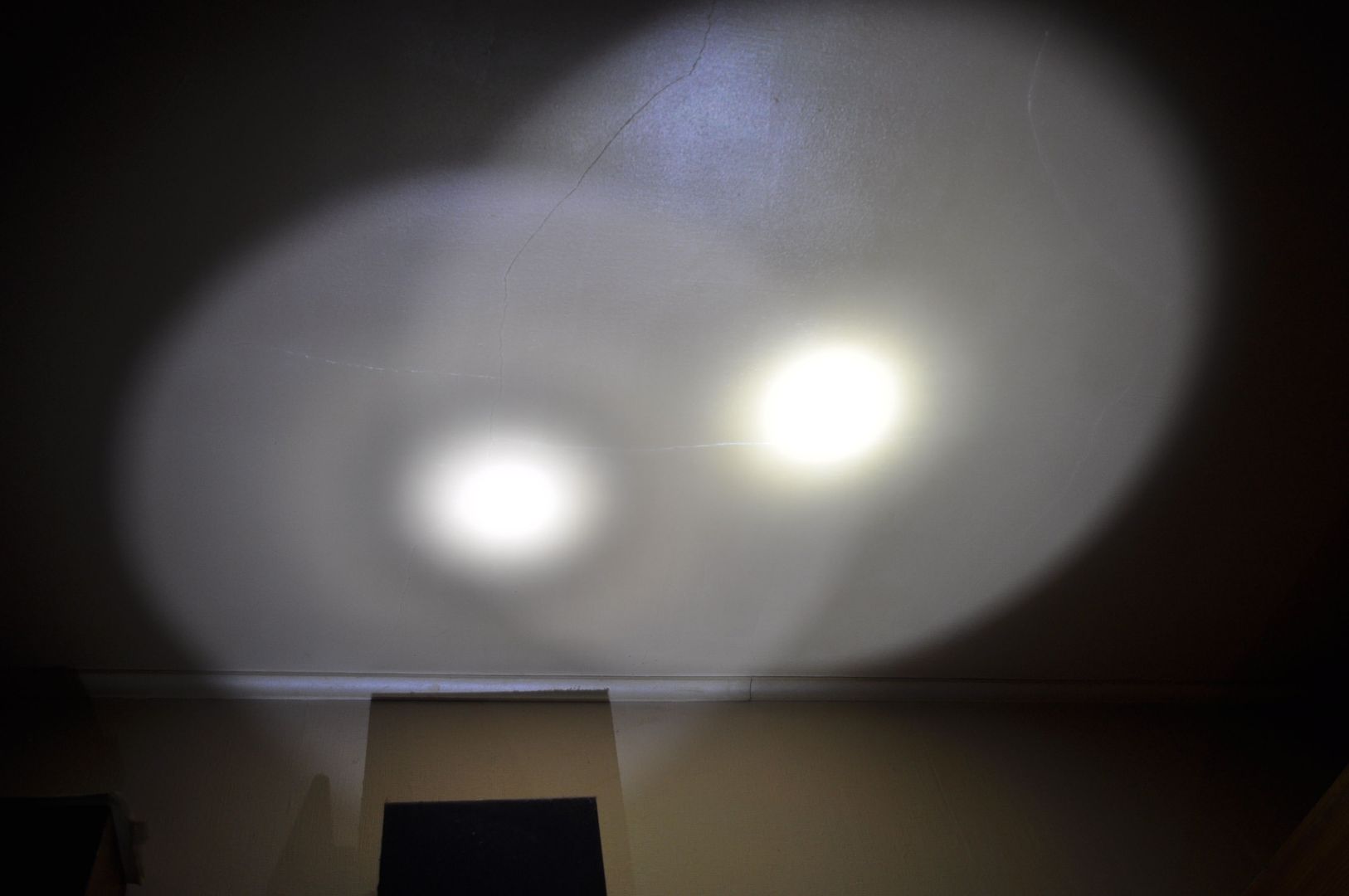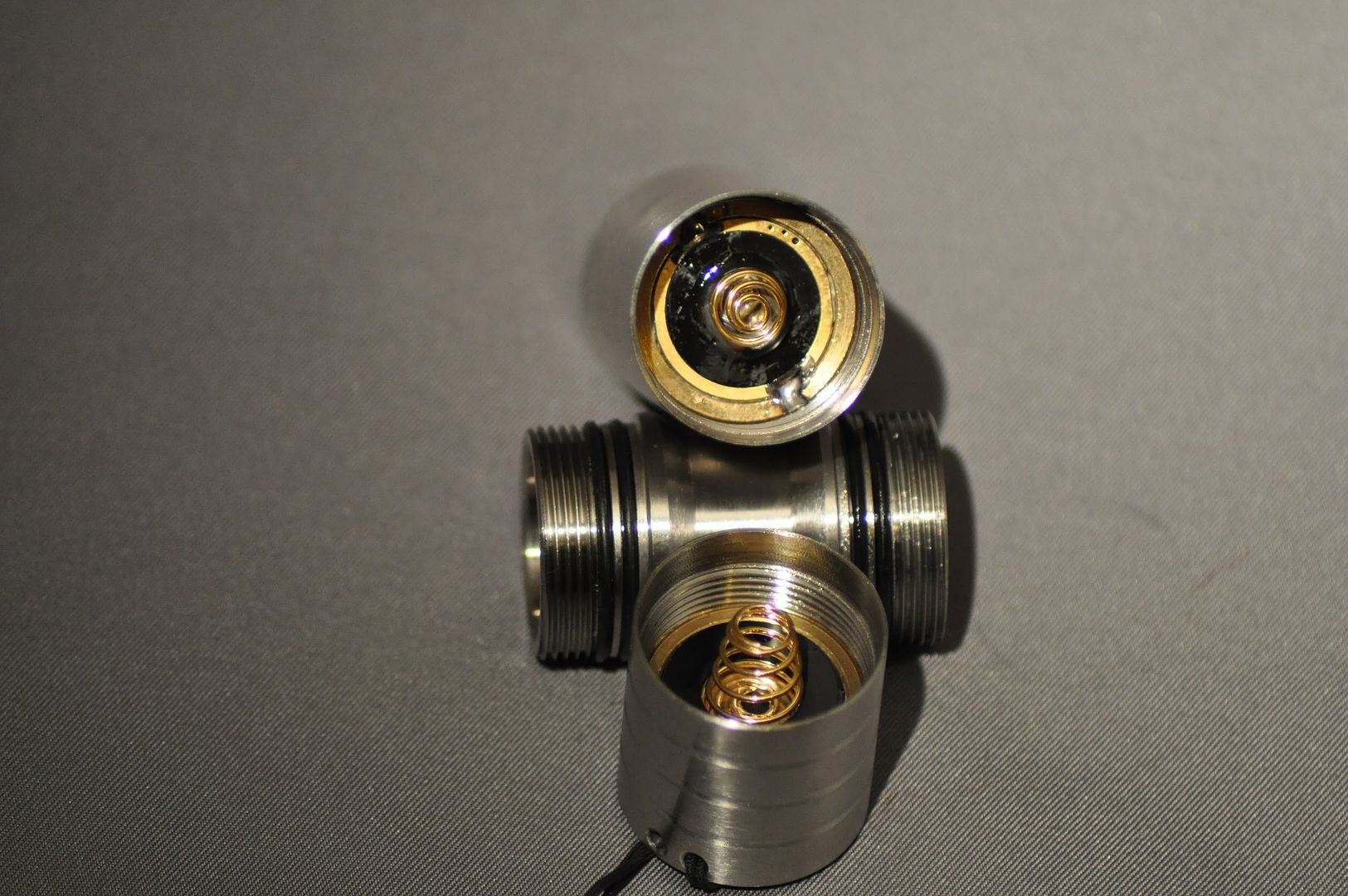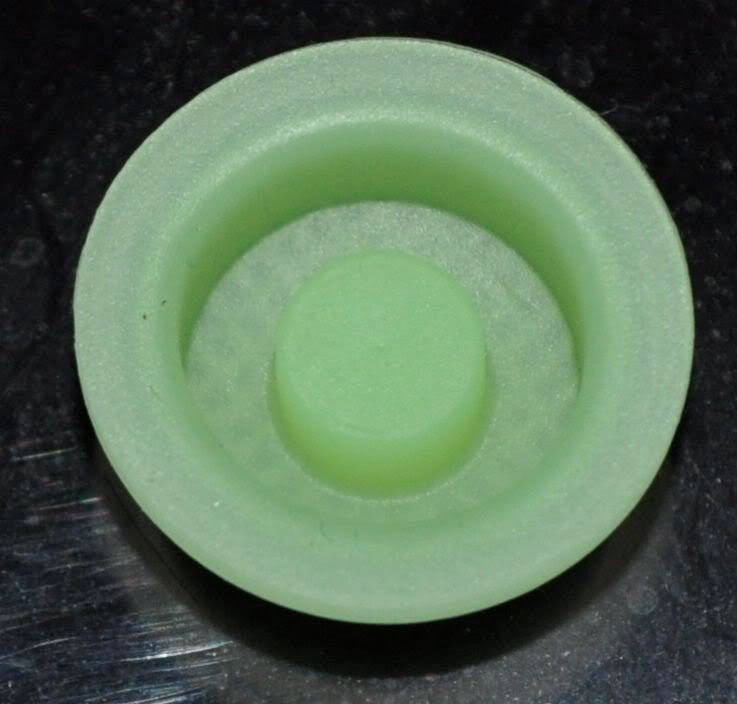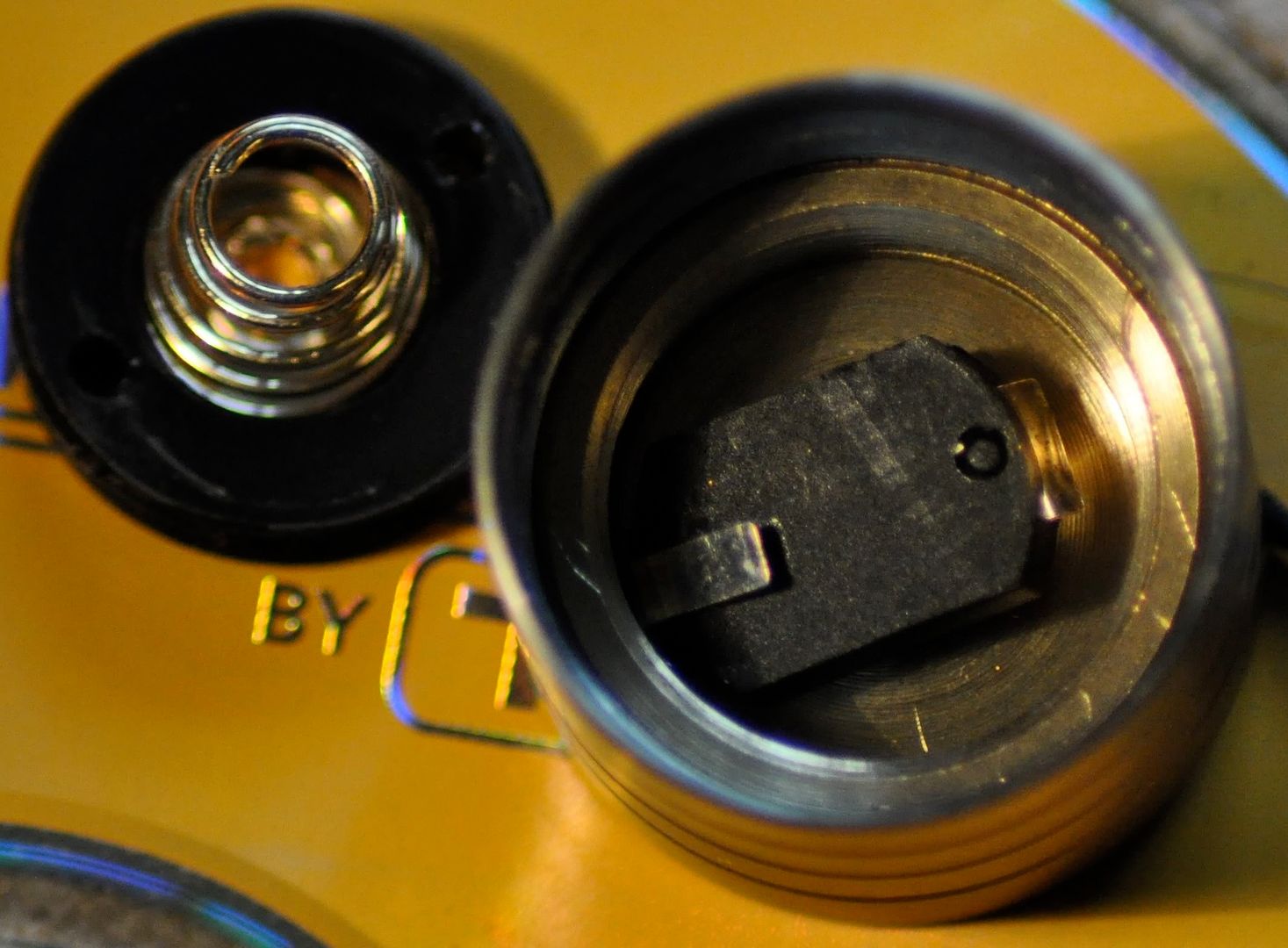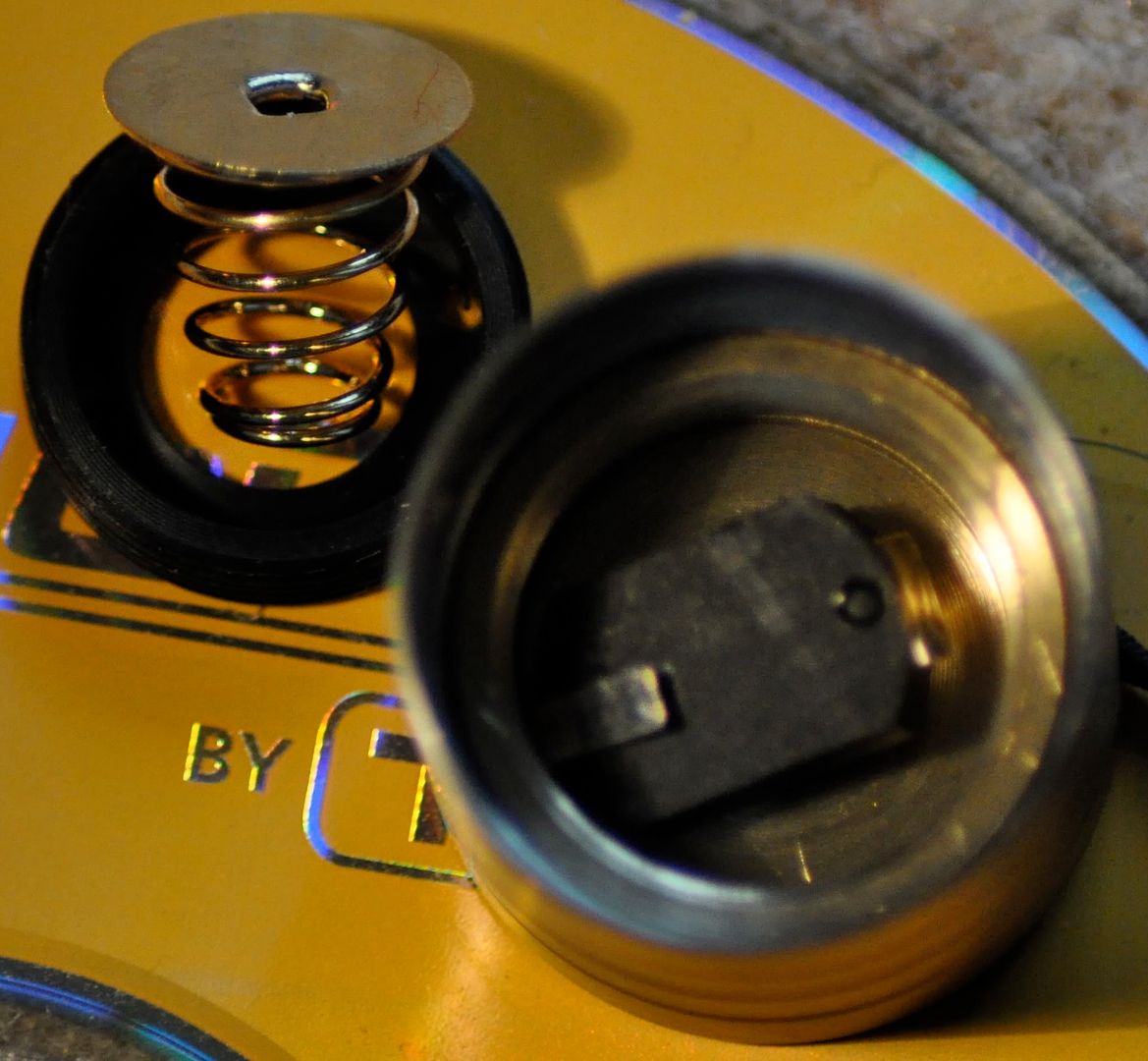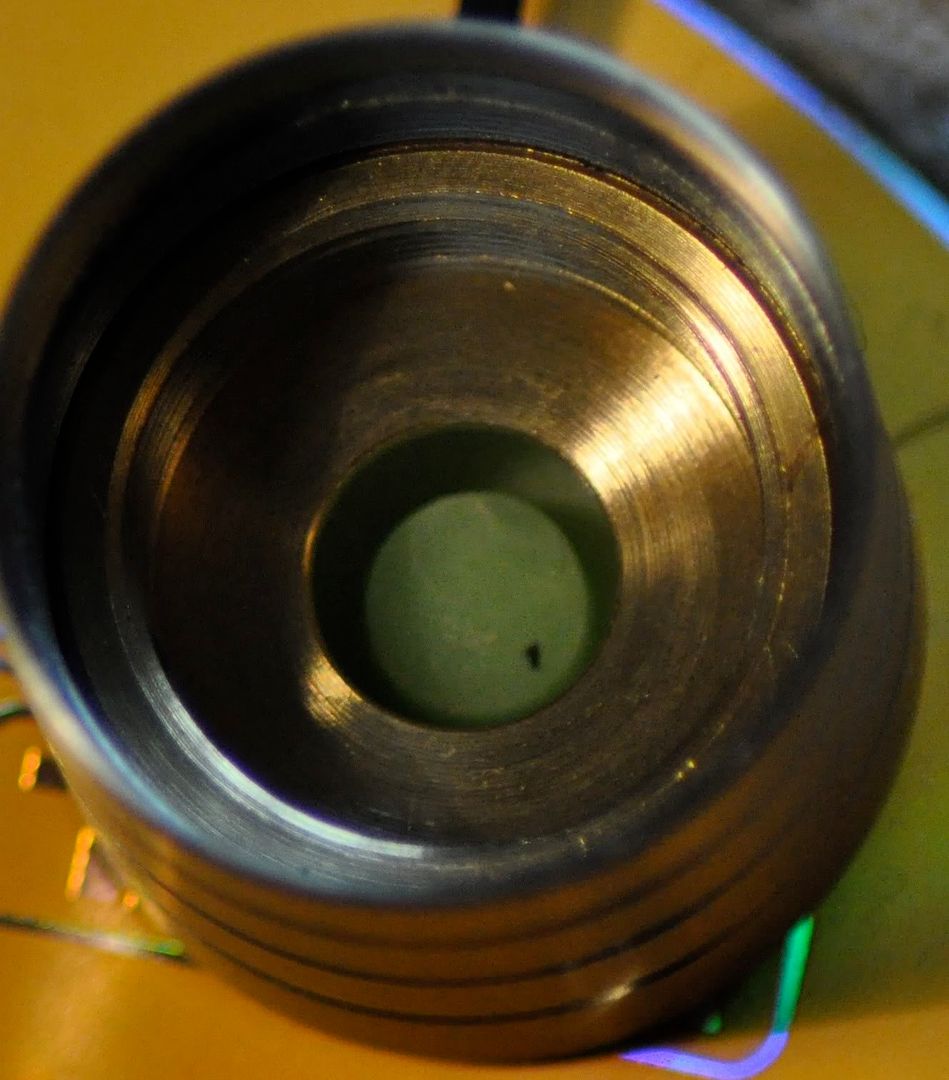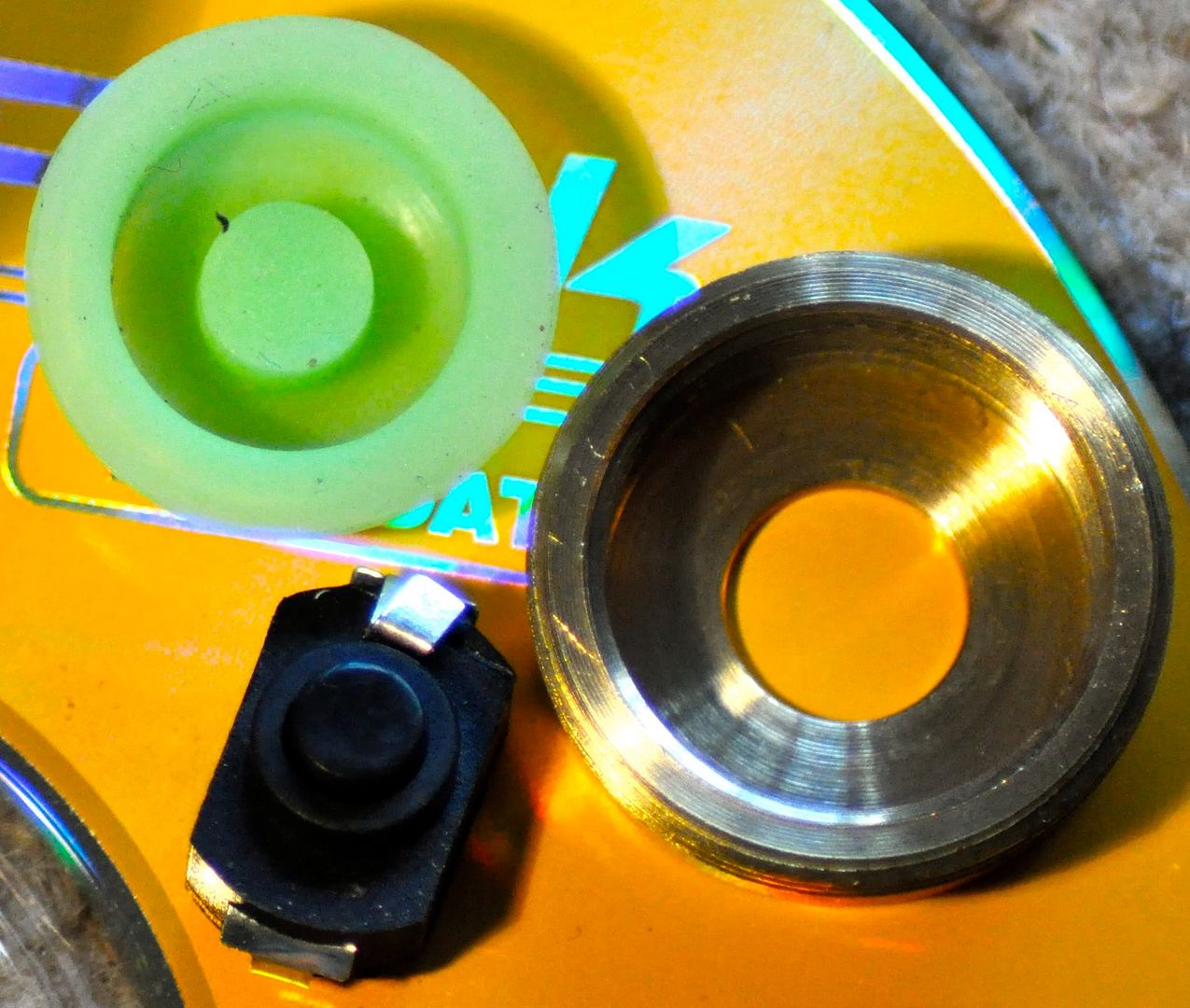Aurora SH-034 Stainless Steel Cree R2-WC 5-Mode 240-Lumen Memory LED Flashlight
Reviewer's Overall Rating: ★★★★★

Summary:
| Battery: | CR123/RCR123/16340 (2.7-4.2V) |
| Switch: | Reverse clicky |
| Modes: | 5 |
| LED Type: | Cree XR-E R2 |
| Lens: | Coated Glass |
| Tailstands: | Sorta - switch cover protrudes beyond end of tailcap |
| Price Paid: | $17.08 |
| From: | http://www.dealextreme.com/details.dx/sku.33813 |
Pros:
- I like it a lot
- Stainless steel
- Metal reflector
- Head and tail interchangeable with Aurora SH-032 an 18650 light. Would make a nice kit if you could buy the 18650 body tube separately - the SH-032 is small for an 18650 light
- Solid feel - i.e., it is quite heavy. It weighs 101g without a cell, 119g with. For comparison, the Tank007 E07 weighs 56g with an NiMH cell in it.
Cons:
- Large for a CR123 light, body is small but head and switch are bigger than they need to be.
- Stainless steel is a poor conductor of heat
- Cree Rings
- Doesn't tailstand properly - but this may be fixable by pruning the switch boot
- It is heavy - I like this but many don't. It is twice as heavy as an Akoray K-106 with a 14500 in it
Features / Value: ★★★★★
Five modes - the usual high, medium, low, strobe, SOS. It does a real SOS rather than SOSOSO which many do. It has mode memory - it comes on in the mode you last left it in. The build quality is exceptionally good. I've not felt such nice threads on a light before. The lanyard is going to be too small for people with large hands, it only just lets my fairly small hands through. I reckon it is good value for the money. I have lights costing several times as much that aren't nearly as well made. The head and tailcap are interchangeable with those on the 18650 SH-032 though the mismatch of finishes looks a little odd. It doesn't do anything fancy, but it is very well made and excellent value for money IMO. It'd be even better if it had no flashing modes or they were hidden like 4Sevens does with the Preon lights.
Here's some Lego shots with the 18650 Aurora SH-032. All modes etc are operational on both. My SH-032 is the 3 mode version.

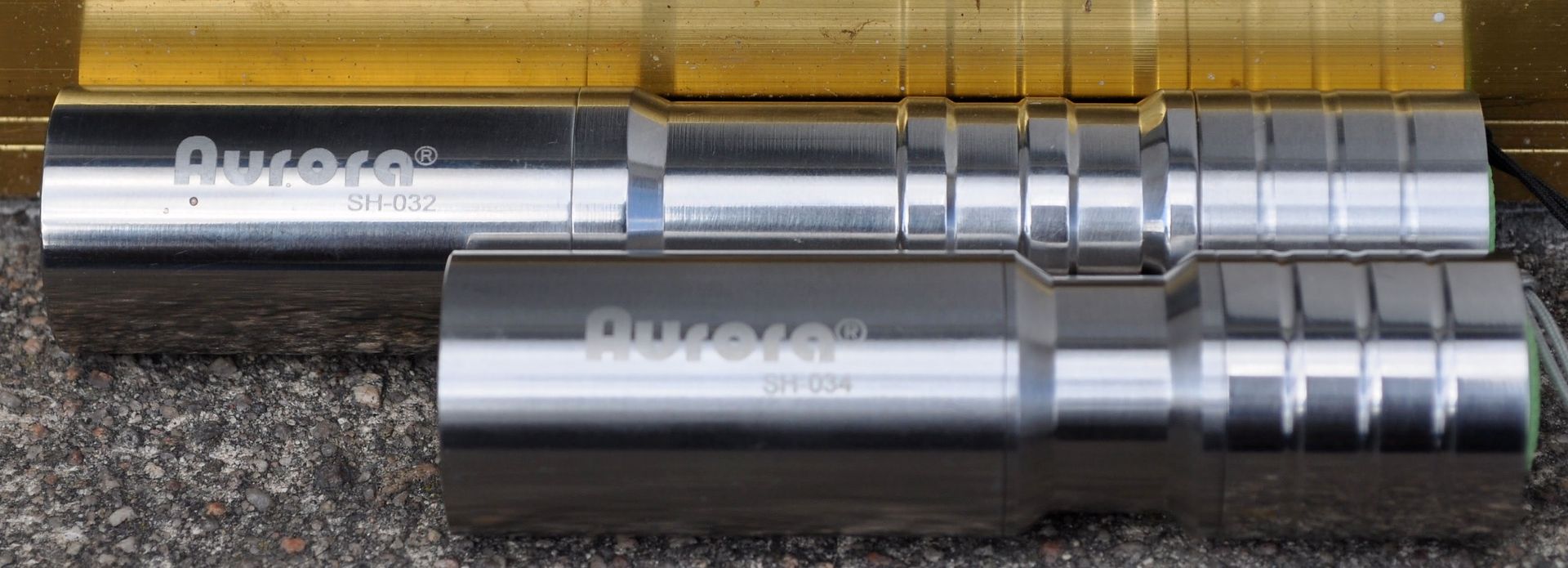

The beam on the SH-032 is somewhat narrower than the SH-034.
Build Quality: ★★★★★
Well put together. It feels robust as there is quite a lot of metal there. With the satin finish to the stainless steel it probably won't show dings, scratches and general marks the way a highly polished finish will. That said, stainless steel is pretty hard and dinging it would probably involve a fair amount of effort. The threads are buttery smooth and came lubed. There are double O rings at both ends of the body tube so it shouldn't leak there. I can't see if there is an O ring at the lens end or not but I'll assume there is and I'll toss it in the sink for a bit and see if any water makes its way in.

The soldering on the head contacts is much prettier than is the norm.
Now for the immersion test. It's been in the sink for about 10 minutes now.

The air bubbles in the water look pretty don't they? There was no evidence of water entry after 15 minutes so there clearly is an O ring at the lens end.
The LED is well centred in the head and has a moderately strong orange-peel effect on the reflector. You can see the metal ring round the LED die which is probably the cause of the "Cree rings".
Glow in the dark (GITD) tailcap that protrudes slightly. It will (just) tailstand on a flat surface, albeit rather drunkenly.


My concrete back step is rather less level than I thought. It took some effort to get it to tailstand at all.
Battery Life: ★★★★
The star rating is for a CR123 light - it is pretty poor by the standards of an 18650 light. CR123 lights are not normally optimised for runtime and this one is no exception. The throw number is impressive, the total output is, as is normal, overstated. I got around 180 lumens which was a slight disappointment. One thing i must do is test the output on various cell types and with the 18650 head - it will be interesting to see if there is any difference in output between the same head on 18650 and RCR123. Calulated runtime on high is 49 minutes depending on when the cell protection cuts in. I forgot to check the voltage of the cells before charging them again unfortunately. Regulation on high and medium is not bad at all though it's clear from the high graph that the first portion is in direct drive till the voltage drops a bit. It also suggests that it'd be a bad idea to run it on more than 4.2V - might well fry the driver.
High: 33 minutes till cell protection cut in
Medium: 1hr 23min 55seconds to shutoff
Low: 9hr 36min
Runtime on high chart. Reasonable regulation once it settles down.

Runtime on medium chart. Pretty good regulation.
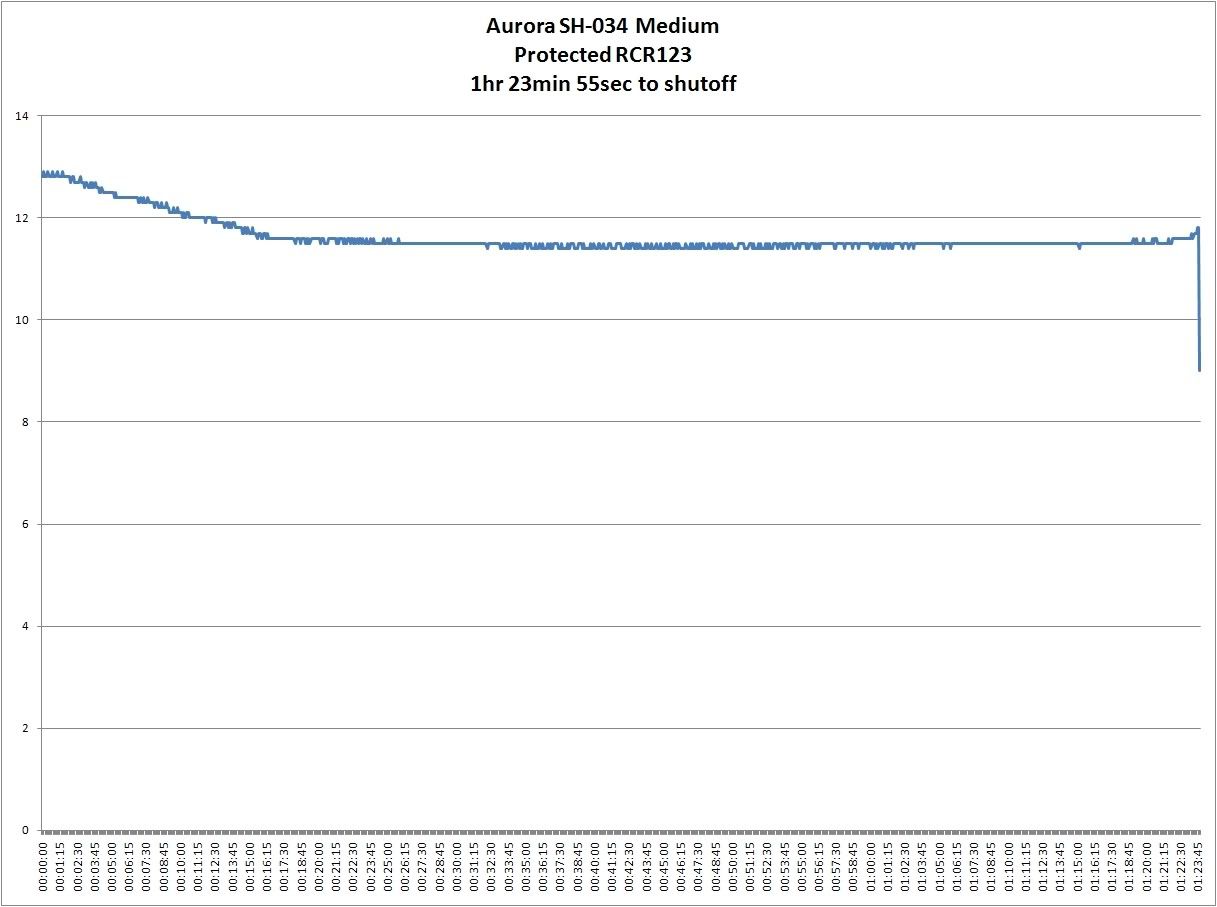
Runtime on low chart. Runs for rather a long time for a CR123 light. Ran for 9hr 36min till shutoff implying a cell capacity of around 475mAh till shutoff. Sounds a little on the low side to me, probably an over-sensitive cut-off circuit. The regulation is essentially flat.
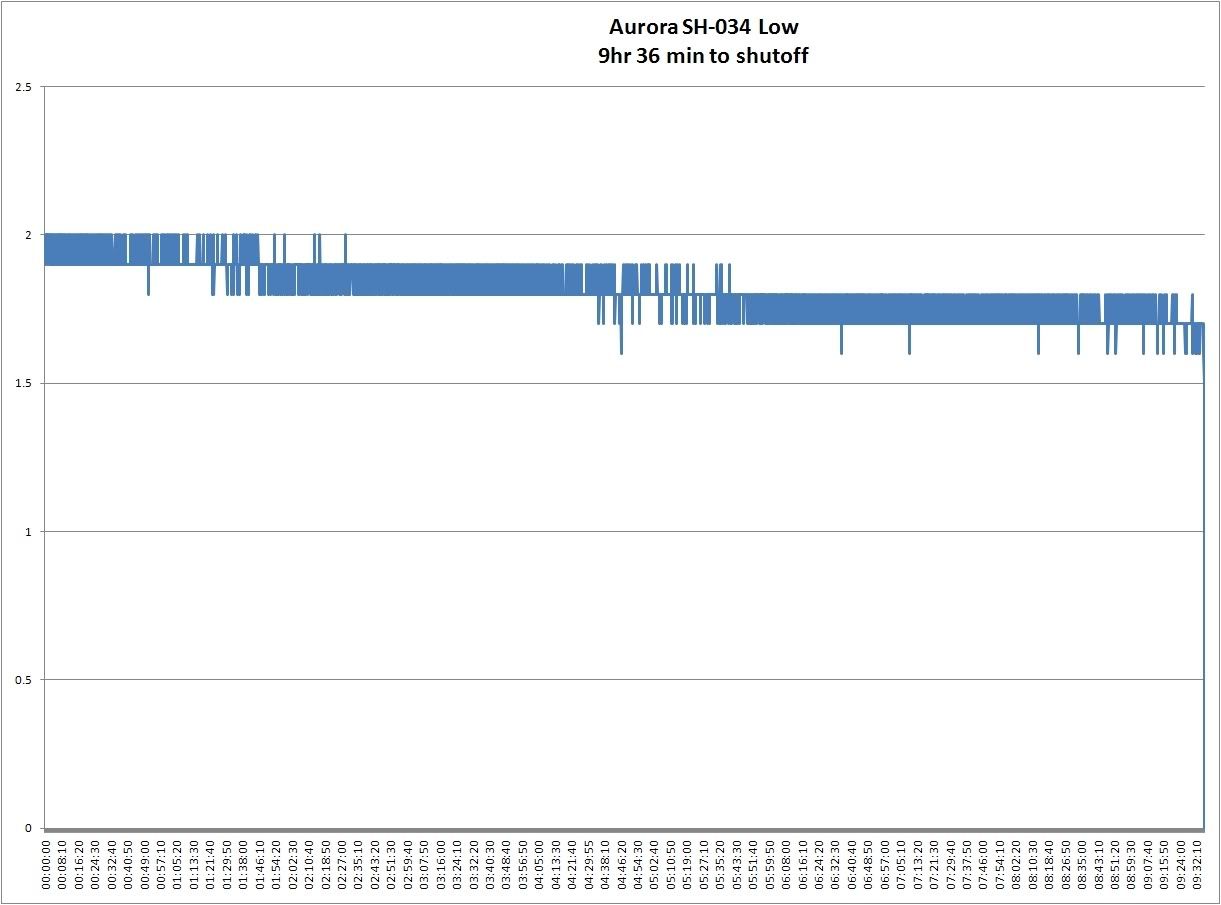
Light Output: ★★★☆☆Copy and paste, maximum ★★★★★
Throw at 1 metre:
High: 7660 lux. This is impressive!
Medium: 2260 lux
Low: 300 lux so on low the runtime should be rather good. These measurements were all with a part-used IMR16340 cell.
Lightbox: This is measuring total output of the light, the throw measurement is a measurement of the brightest part of the hotspot.
High: 810 lux. My lumen estimates are not 100% reliable but I reckon this is about 180 lumens give or take 20%
Medium: 245 lux. ~55 lumens
Low: 32 lux. ~7 lumens
Current draw:
High: 850mA
Medium: 250mA
Low: 50mA
Strobe: 375mA peak
SOS: 730mA peak
Now to do some runtimes. Given the IMR cells have no protection circuit and are quite expensive I'm not going to run them to death for these tests. I've got a fan on the light, but even so after 9 minutes on high it is quite warm. After 10 minutes light output is down from 50-40 microamps suggesting it goes into direct drive on high.
Some beamshots:
In dense fog - high
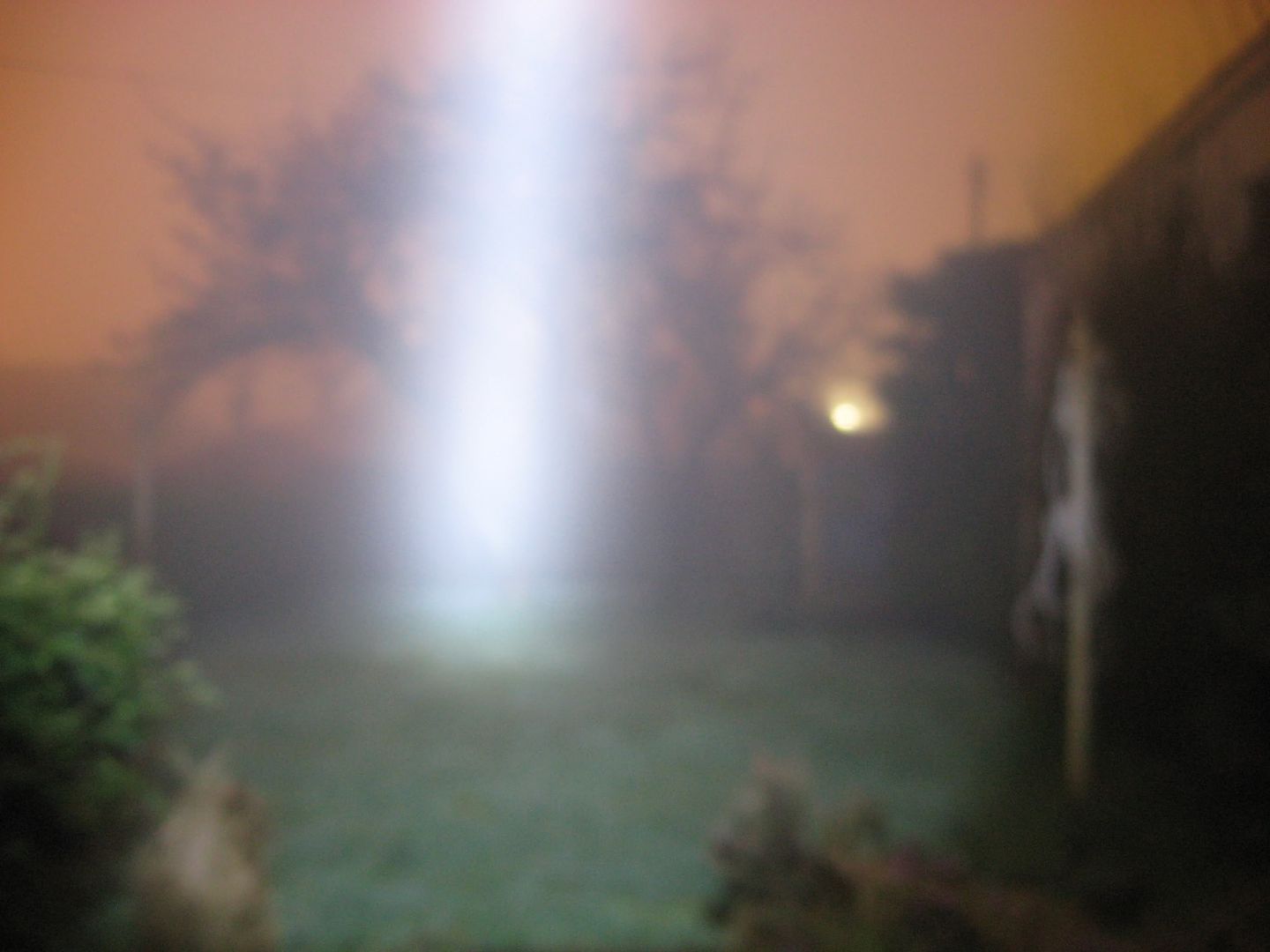
Medium

Low

Ceiling beamshot comparison. The SH-034 is on the left, the SH-033 on the right. The beam of the 34 is quite noticeably narrower (and therefore throwier) than the 33. Notice the really big hotspot on the 34, quite surprisingly big in a fairly narrow beam. The 34 has a nice beam colour.
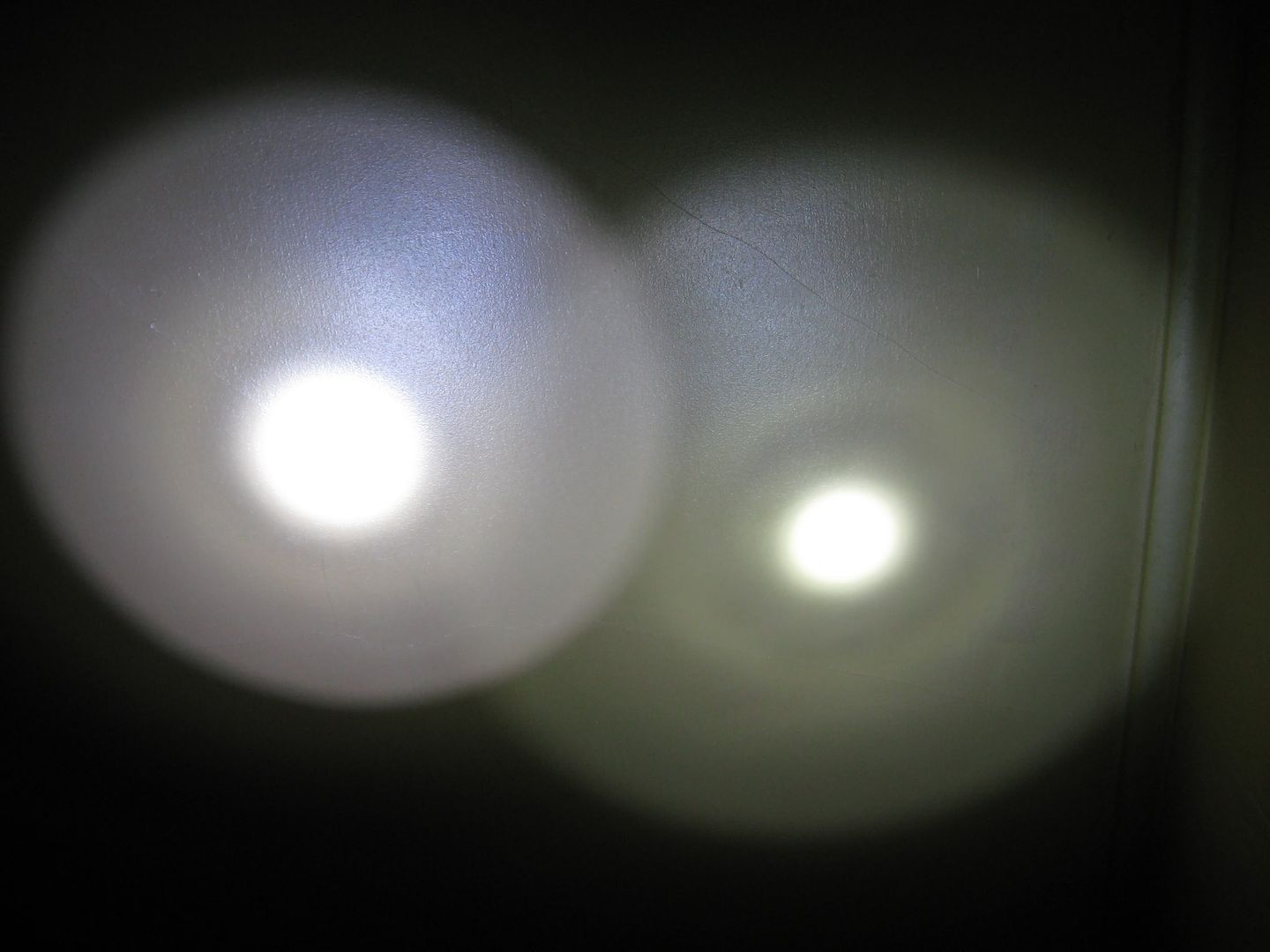
If it is still dark when the low runtime ends, I'll put up beamshots in more normal atmospheric conditions. So here we go
Control

High. Notice that the tree trunk is washed out - this thing throws nicely. Will need to try it on a longer range test.
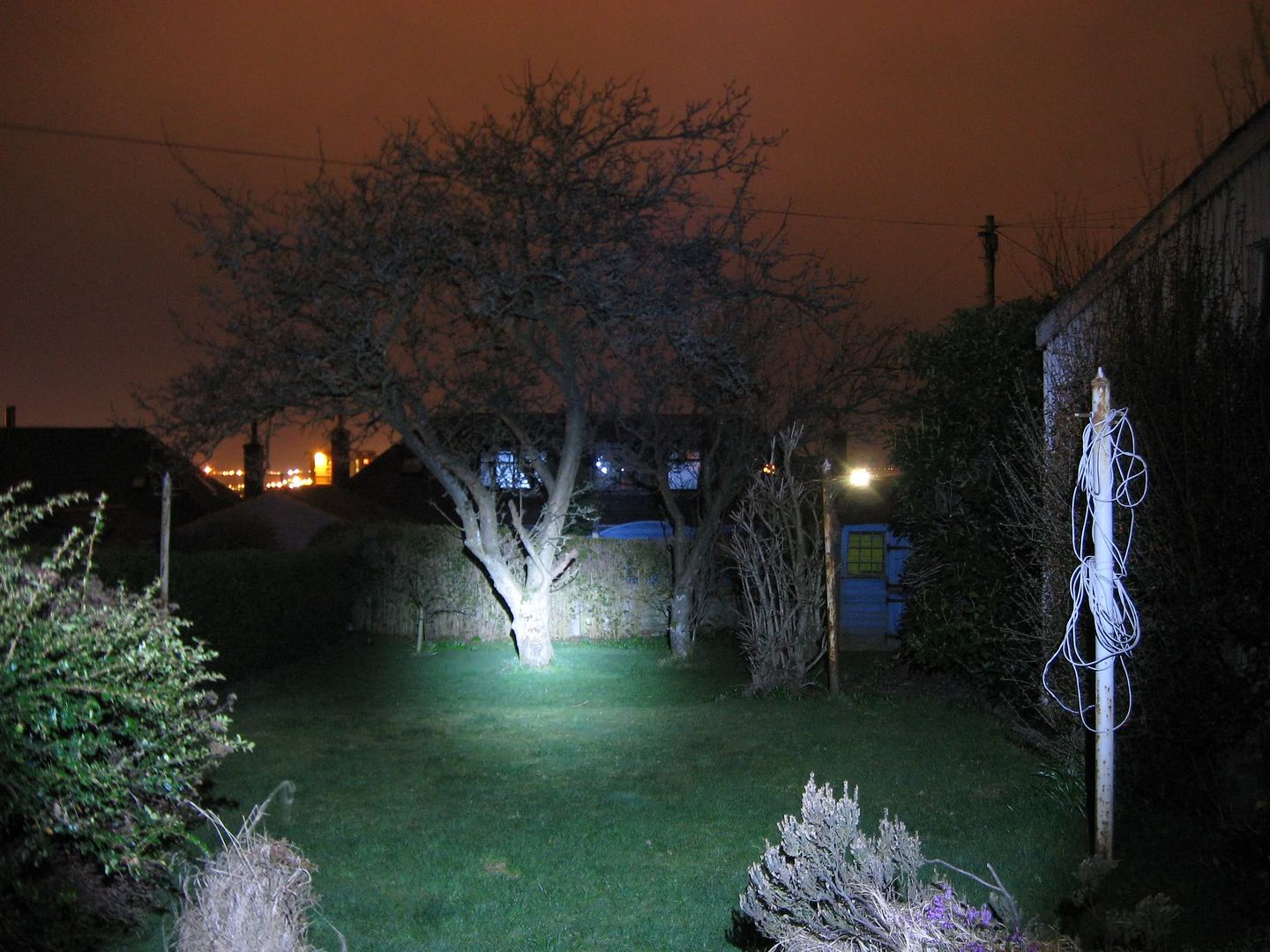
Medium
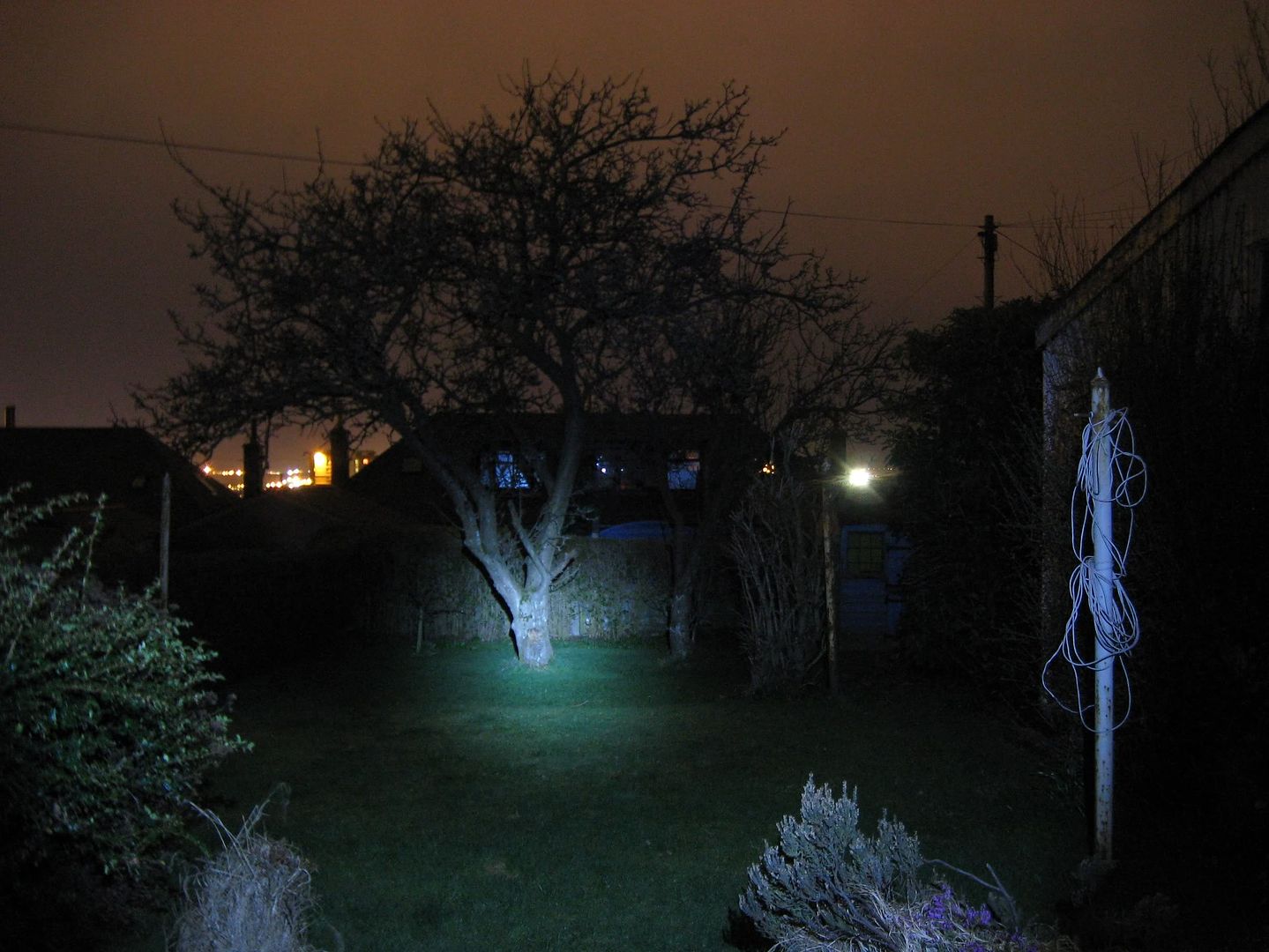
Low
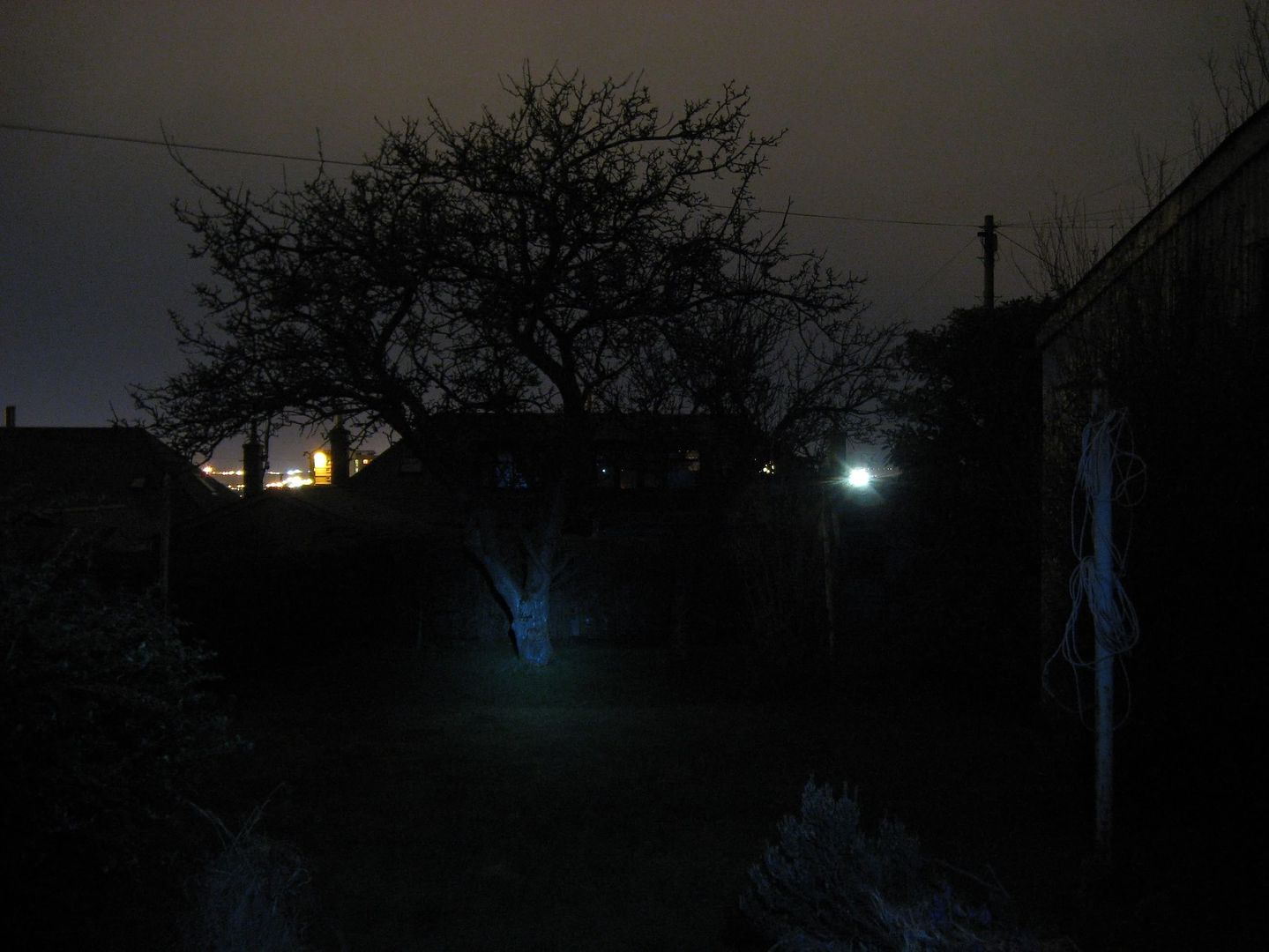
Summary: ★★★★★
The quality for almost any price is excellent. There's a good deal of light coming out of it, the levels are well-chosen - much better than most. This may just be the single best made light I own - of 70 or so lights. The beam could be prettier but I doubt it'll ever actually make the slightest difference in the real world. Here is the beam beside that of a Trustfire F22 which is one the right, the Aurora on the left.
